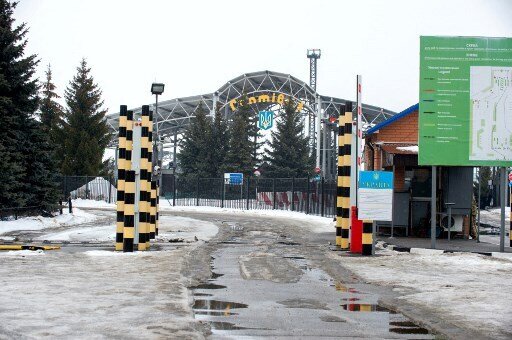Wrapped up against the cold in a padded camouflage jacket, a Ukrainian border guard cradles his automatic rifle as he looks out over a barbed wire-topped fence into the expanse of Russia beyond.
While international tensions have soared in recent months over fears Moscow could stage a full-scale invasion, the looming threat of the Russians has been with the Ukrainian forces protecting the frontier a lot longer.
Eight years ago, before the Kremlin seized Crimea and sparked a brutal separatist conflict in the industrial east of Ukraine, the border barely existed.Relatives in the two ex-Soviet countries crossed back and forth without thinking about it to visit one another, and business ties were close.
But then, as the Kremlin began fuelling violence and bloodshed in Ukraine in 2014, reinforcing the border in the country’s northeast became a priority for Kyiv.Now, even though nothing can be seen across the border except for snow-covered fields, the West is warning that over 100,000 Russian troops poised along Ukraine’s frontier could be preparing to strike.
'We are constantly on alert,' says border guard officer Mykola Feryn.'We conduct training, especially with reserve forces trained in combat operations. In the case of Russian aggression, we will be the first to be involved.'

A view of Goptivka check point at Ukrainian-Russian border, some 40 kms from the second largest Ukrainian city of Kharkiv, on February 7, 2022. (AFP)
Observation tower
Feryn points to an observation tower equipped with a video surveillance system that can scan the horizon up to 10 kilometres (six miles) away.The fence was erected and a trench dug as part of the push to reinforce the border that started in 2015. Border guards huddle for warmth around a stove in a bunker.
The nearby crossing of Goptivka, once the region’s main route to Russia, is quiet with few vehicles looking to enter Ukraine.Just 40 kilometres away, the 1.5 million residents of Ukraine’s second city Kharkiv have learnt to live with the idea that war may be coming — even before the recent spike in tensions.
In 2014, pro-Moscow crowds took over Kharkiv’s regional administration, and fears swirled that the largely Russian-speaking industrial hub some 400 kilometres from Kyiv might be taken over by separatists.
But local politicians and reinforcements from Kyiv helped claw Kharkiv back, stopping it from following two neighbouring regions as they plunged into a bloody conflict fuelled by the Kremlin.A flow of traumatised people displaced by the fighting only served to highlight the grim fate Kharkiv had avoided.Faced by renewed fears that their region could be plunged into violence, some in the city insist they are willing to fight.
At the weekend some 20 civilians learnt how to handle Kalashnikov rifles and pump-action shot guns at training for a territorial defence organisation set up by a former combatant.
‘Prepare for the worst’
“Weapon-handling is a skill that can be needed at any moment, especially if you live in Kharkiv. So it’s good that they give an opportunity to shoot,” said computer programmer Dmytro Bolshutkin.”Somehow we were lucky in 2014, but we cannot be lucky every single time.
We must be ready. We must hope for the best, but prepare for the worst.”While Ukraine’s authorities have sought to play down the threat of an imminent invasion, President Volodymyr Zelensky did suggest Moscow could look to “occupy” Kharkiv.
After eight years of conflict, “life has certainly changed, but the first wave of fear and panic has disappeared”, says local lawmaker Galyna Kuts at a Ukrainian “Unity March” Saturday, that saw several thousand people demonstrate against Russian aggression.
“We understand that we are at the front line and people like me will not leave Kharkiv, we will organise its defence.“
The lawmaker says many residents have readied themselves to cope in case basic services -- water, electricity, phone networks -- are cut.
She says she has stopped buying high-heeled shoes in case she needs to flee at any moment and has taken first-aid training.
"Kharkiv is located on the border, Kharkiv today is the shield of Ukraine and all civilised Europe," says Kuts.
